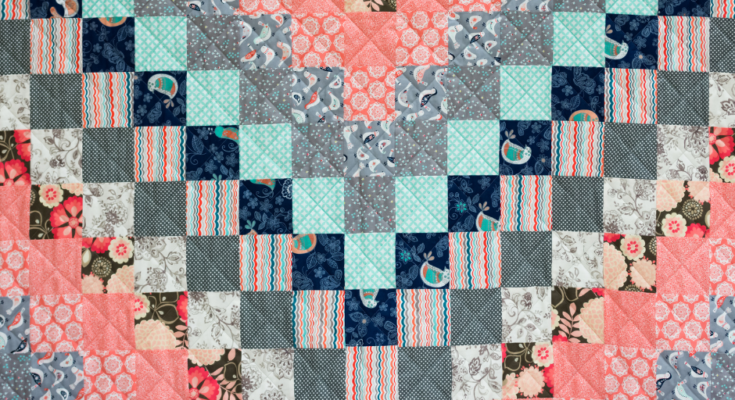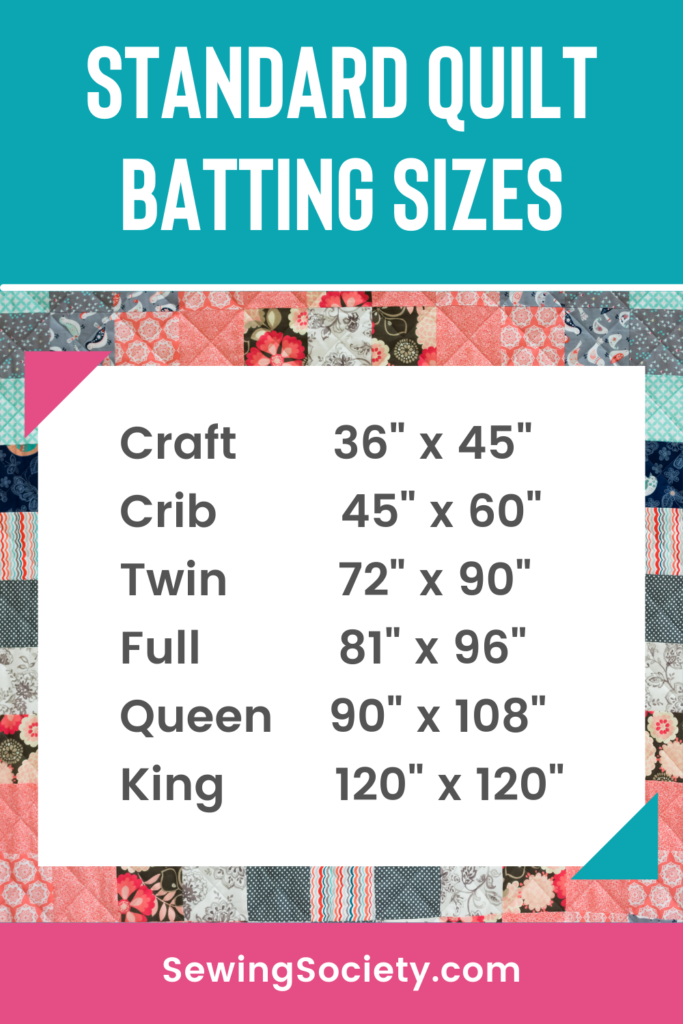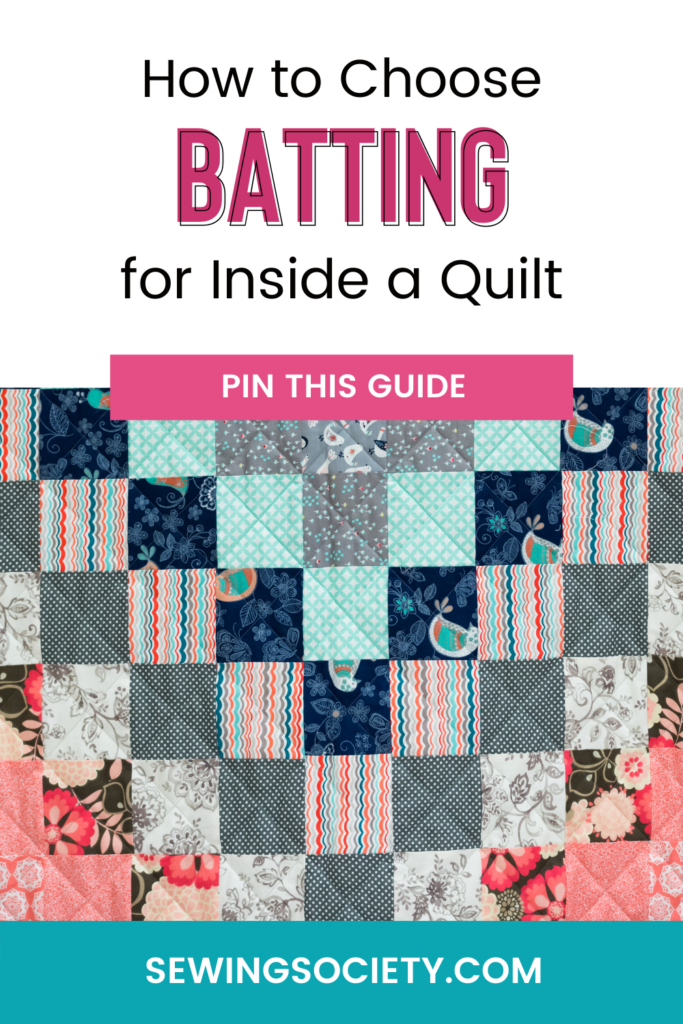Disclosure: This post may contain affiliate links. I earn a small commission when you click a link and make a purchase. Thanks for supporting SewingSociety.com!
Batting is the fluffy layer on the inside of a quilt that provides warmth, thickness, and weight. There are dozens of different types, and the sheer number of choices can make choosing the right batting for your project confusing and overwhelming…
Personal preference will play a big role in your decision, but this post will walk you through different factors to consider when choosing batting for a quilt.
Size and Loft
The first thing you need to know is that batting comes packaged in sizes for craft, crib, twin, full, queen, and king size quilts. However, you can cut any batting to a custom size. (Graphic shows the actual sizes.)
Some people like to buy quilt batting in bulk to save money and then cut it down to the size they need when working on a project.
Quilt batting will also list a “loft.” This refers to how thick or thin the batting is. Low-loft batting is easier to work with, but high loft batting creates fluffier quilts. Some high-loft batting has a layer of “scrim” or “webbing” added that helps hold the batting together.
You can use a standard, domestic sewing machine for quilting, but it is harder to do the larger size quilts. People who do a lot of quilting often buy long-arm quilting machines to get the job done… I’ve been impressed lately with the technology available for long-arm quilting machines. There are even robots you can buy to do the quilting for you.
Quilt Batting Fibers
You can find batting in three colors — natural, bleached, and black. Bleached batting should be used in light quilts, natural or white batting should be used in medium-value color quilts, and black batting should be used in dark-colored quilts. Bleached batting is the most popular.
Batting can be made from cotton, polyester, cotton-poly blends, bamboo, silk, or wool. Every fiber has different advantages and disadvantages. We’ve summarized each below.
- Polyester Batting: This is one of the least expensive quilt battings you can buy. It is lightweight but has insulating properties that make it very warm. It also durable enough to handle multiple washes, but the fibers can shift if not quilted well.
- Cotton Batting: This is a popular batting choice for people who prefer a natural fiber. It is breathable, lightweight, and fluffy. Cotton batting gets softer with each wash, but it is prone to shrinking.
- Cotton/Polyester Batting: If you’re not sure which quilt batting to buy, you can’t go wrong with a cotton/poly blend. It is lightweight and durable but takes on both the properties of cotton and polyester. The only disadvantage is that the scrim may irritate you. It is an all-around low-maintenance quilt batting.
- Wool Batting: This is a 100% natural fiber that is one of the best choices for machine quilting because it does not shift easily. It also resists folds and creases. Wool batting is lightweight and breathable and retains heat better than most other battings. However, when using wool batting, keep in mind that some people are allergic to this fiber.
- Bamboo Batting: This batting is gaining in popularity, especially when blended with another fiber, because it is ecofriendly. Bamboo is softer than other battings and it is heavy. The great thing about bamboo batting is that it dries quickly and is resistant to mold. You’ll have to pay a bit more for bamboo batting, though.
- Silk Batting: This is another expensive quilt batting, but it gives a nice, natural drape. It is lightweight and some people may be allergic.
All quilters will have their own preference when it comes to choosing batting for a quilt. ConnectingThreads.com is a good place to look!
Here are some highly recommended quilt batting brands:
- Hobbs Heriloom Natural Batting
- Soft and Stable Batting
- Bosal Katahdin Batting
- Quilters Dream Batting
- Mountain Mist Batting
- Buffalo Snow Batting
Do you have a favorite quilt batting? Let us know in the comments below.
Also Read: This Secret Quilt Batting Alternative Is Saving Quilters Tons of Money
Share this post on Pinterest!






